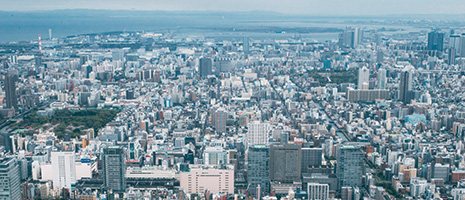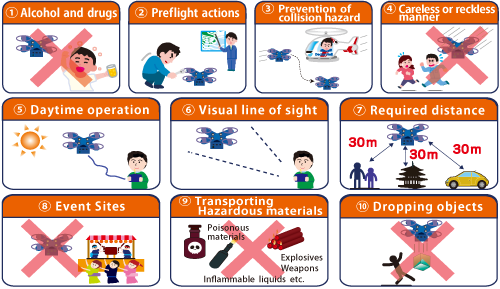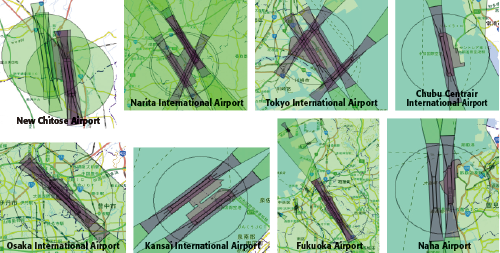Home > Highlighting JAPAN > Highlighting Japan December 2019 > Policy-Related News
Highlighting JAPAN

Rules on Flying Drones in Japan
Japan has recently amended its rules on the operation of drones and other unmanned aircraft (UA).
In recent years, there has been rapid growth in demand in Japan for “UA/Drones,” flying objects that cannot accommodate a person and are operated by remote control or autopilot technologies. UA/Drones have been developed for recreational and business uses such as taking photographs and video, spraying agricultural chemicals and inspecting infrastructure. Going forward, it is expected that further proliferation of the technology in a range of areas will create new industries while expanding service opportunities and helping to improve our quality of life.
Meanwhile, operating UAs must not undermine air traffic safety, injure people, or damage buildings or vehicles on the ground. For that reason, partial amendments to the Civil Aeronautics Act were issued and came into force in December 2015 and September 2019, respectively, introducing fundamental safety rules for unmanned aircraft.
The Civil Aeronautics Act defines the term “UA” as any aerial vehicle weighing over 200 grams that cannot accommodate people on board for structural reasons and can be remotely or automatically piloted.
(1)Airspace requiring administrative approval for flying UAs
Any person who intends to operate a UA in the following airspaces is required to obtain permission from the Ministry of Land, Infrastructure, Transport and Tourism, or MLIT. (Permission will be granted only if you have completed certain safety procedures following the application for permission to the Ministry.
- Areas where air traffic safety could be undermined
(A) Airspace around airports. No-fly zones include airspaces above designated approach surfaces around airports and heliports, transitional surfaces, horizontal surfaces or extended approach surfaces, conical surfaces or outer horizontal surfaces.
With the partial amendment made to the Civil Aeronautics Act in September 2019, the airspace below approach surfaces, transitional surfaces and above the airport premises have been added to no-fly zones in consideration of the possible significant impact on airport operations resulting from the closing of a runway due to an accident caused by a flying UA, given in particular the busy runways at the following eight airports: New Chitose Airport, Narita International Airport, Tokyo International Airport, Chubu Centrair International Airport, Osaka International Airport, Kansai International Airport, Fukuoka Airport and Naha Airport. (See Figure.)
(B) Airspace at or above 150 meters above ground or sea level
- Airspace above densely populated or inhabited districts
(C) Airspace above densely inhabited districts as defined by the government based on the results of the National Census
(2) Operational limitations
The following rules must be followed when flying a UA. Rules [5] to [10] below are not applicable to flights if administrative approval has been obtained from MLIT. (For rules [5] to [10], permission will be granted only if certain safety procedures have been completed with the application made in advance for permission to the Ministry.)
[1] Do not operate UA/Drones under the influence of alcohol or drugs.
[2] Fly or operate UA/Drones after taking preflight actions.
[3] Operate UA/Drones to prevent collision hazards with airplanes or other UAs/Drones.
[4] Do not operate UAs/Drones in a careless or reckless manner
[5] Fly or operate in the daytime.
[6] Operate UA/Drones within Visual Line of Sight (VLOS).
[7] Keep a 30 m or more operating distance between UA/Drones and persons or properties on the ground/water surface.
[8] Do not operate UA/Drones over event sites where many people gather.
[9] Do not transport hazardous materials such as explosives by UA/Drone.
[10] Do not drop any objects from UA/Drones.
Penalties
If the rules (1) or [2] through [10] in (2) are violated, the UA/Drone operator is liable for a fine of up to 500,000 yen. In the case of violation of rule [1] in (2), the operator is liable for imprisonment for up to one year or a fine of up to 300,000 yen.
The permission requirements listed in (1) and rules [5] through [10] in (2) are not applicable to search and rescue operations by the central government, municipal government organizations, or their contractors in accidents or disasters.
For more information on the Civil Aeronautics Act, please visit the following website: https://www.mlit.go.jp/en/koku/index.html


Notes: The purple areas show new no-fly zones. The Figure may reflect certain measurement errors or represent airport sites that have been altered after completing construction. For further details, please contact airport administrators.

© 2009 Cabinet Office, Government of Japan






